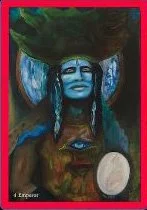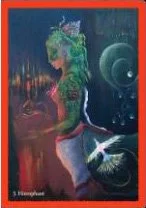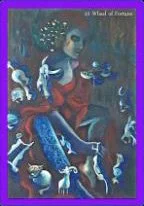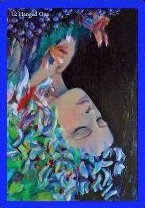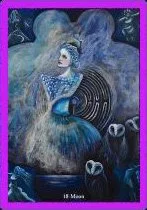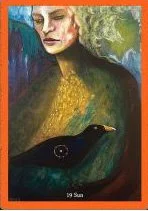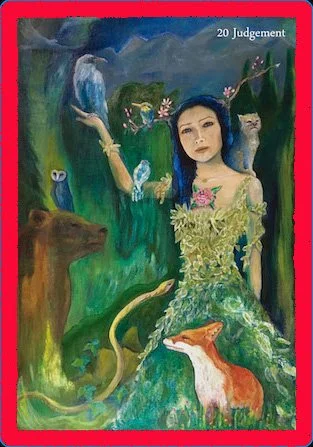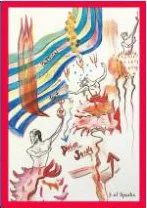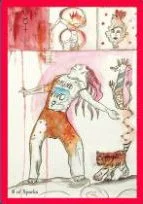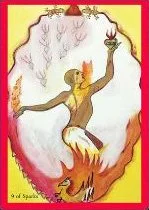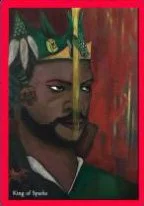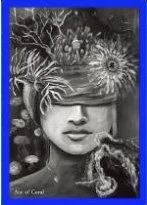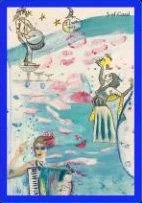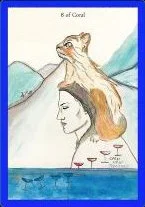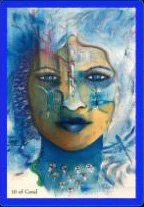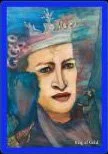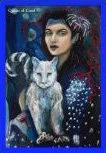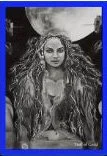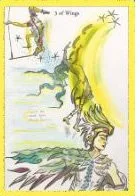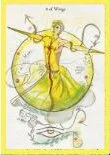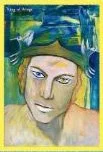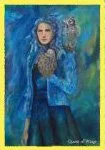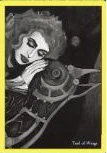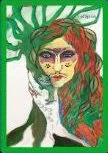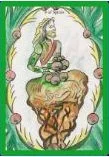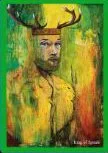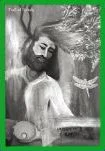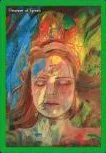
Musical Dream Tarot
Welcome to the Musical Dream Tarot! These 78 musical compositons are the result of a 19-month long project I undertook starting in June 2021, to receive music in my dreams associated with the 78 Keys of the Tarot - a total of 773 dreams during that period. The entire process of its creation is detailed in a book I published in April 2024 through River Sanctuary Publishing, The Musical Dream Tarot. It can be ordered through their website, https://riversanctuarypublishing.com/, or through any of the usual on-line book distributors. You can also obtain an autographed copy from me for $25 plus $5 shipping and handling (U.S. only) by using the form at the bottom of this web page.
The musical selections are organized into five sections, based on the organization of the Tarot into 22 Major Arcana and 56 Minor Arcana, the latter divided into four suits of 14 cards each (Wands, Cups, Swords, and Pentacles). These are the origin of the familiar playing cards, with one additional court card, the Page.
This website is designed for users of the Tarot - either for self-discovery or for Tarot readers who are working on behalf of their clients. When a card is drawn, you may pull up that card on the website and click on the audio link below it. My suggestion is that you concentrate on the image on the card while listening to the music. The version of the Tarot I am displaying here was designed by Carmen Sorrenti, and it is known as the Pholarcos Tarot (http://www.arnellart.com/carmen-tarot.htm). In this deck, the Knight and the Page of traditional decks are renamed the “Trail” and the “Dreamer”. Carmen has given me full permission to use these images. The image of the Shape-Changer which heads each of the five sections of the website appears on the backs of all the cards in her deck.
If you have questions about this website, or if you are interested in obtaining scores for performances, please contact me using the form at the bottom of this page.
Curtiss Hoffman
The Major Arcana
The 22 Keys (starting with Key 0 through Key 21)
These are deeply archetypal images, associated with the signs of the zodiac, the planets, and the elements.
The Minor Arcana
Wands
The 14 Keys (starting with Ace through Page)
In the Pholarcos Deck, these Keys, associated with the Fire element, are referred to as “Sparks”.
Cups
The 14 Keys (starting with Ace through Page)
In the Pholarcos deck, these Keys, associated with the Water element, are referred to as “Coral”.
Swords
The 14 Keys (starting with Ace through Page)
In the Pholarcos deck, these Keys, associated with the Air element, are referred to as “Wings”.
Pentacles
The 14 Keys (starting with Ace through Page)
In the Pholarcos deck, these Keys, associated with the Earth element, are referred to as “Spirals”.
Additional Musical Compositions
The Gilgamesh Cantata
In 2010, I obtained a copy of C.G.Jung’s Red Book, his own personal dream diary. This fascinating account seemed only to want to be read at night, and at times when I awoke from a dream and began reading where I’d left off, I found that my dream was similar to the one I was reading about! On returning from a visit to summer music camp, I had a “big dream” which featured that year’s camp directors leading a chorus singing a text which I recognized from the Red Book as an incantation to the Babylonian hero Gilgamesh (called Izdubar in the book). This gave me the inspiration to write music for the incantation based upon my dreams. It is scored for 4-part chorus, a capella, and I translated the Swiss-German text into the language of the Gilgamesh epic, Akkadian. While for copyright reasons it was not possible to produce recordings of the music with actual words, the melodies, sung on voiced syllables, are available below. The music is in 8 parts.
Part One describes the characters in the story, likened to those present at the Nativity of Christ. The music resembles a Hora.
Part Two describes the suffering undergone by those who await the rebirth of the god. The music is in an A:B:A form, with the central portion being a long accompanied solo for the altos.
Part Three is a more joyful expression which celebrates the light of the ancient road. The music is a rondo with a repeating chorus.
The next part, labelled “IVA”, addresses the god by several of his attributes, each preceded by the word “Amin”, which is the same as “Amen”. As one of these attributes is “the beginning and the end”, the music cites themes from the first and last movements of the piece.
Part Four, proper, presents a series of enigmatic statements: a word never spoken, a light which has never shone, a confusion without equal, and a road without end. Beneath these, Jung’s description of the spirit of the deep begins low in the basses and gradually rises to the surface.
Part Five is by far the longest and most complex of the compositions. It is a set of prayers addressed to the god in the egg by those who eagerly await his reappearance. It is a kind of a rondo, in which after a brief introduction a theme repeats with variations. However, at a certain point the tonality changes, the tempo accelerates, and — as dictated by my dreams — the music morphs into segments from the final chorus of J.S. Bach’s St. Matthew Passion. This is appropriate, since the text of the Passion is set at the tomb of Jesus, where the disciples await his reappearance.
The next section, labelled Part VIA, is an appeal to the god to reappear. It is a more lively rondo.
The final section of the cantata, six, is an optimistic description of all of the places and persons the worshippers have asked for the location of the god, before they found him in the egg. It proceeds to a climax in which the “Amin” from part IVA is repeated, leading to a joyful coda.





